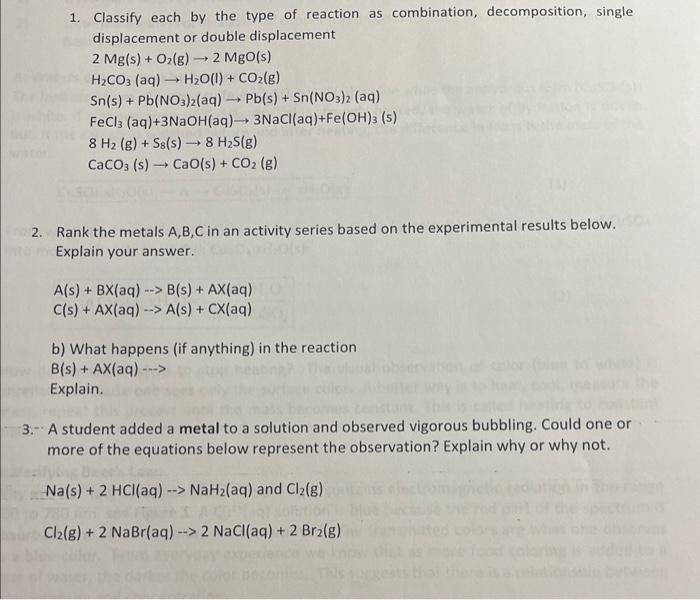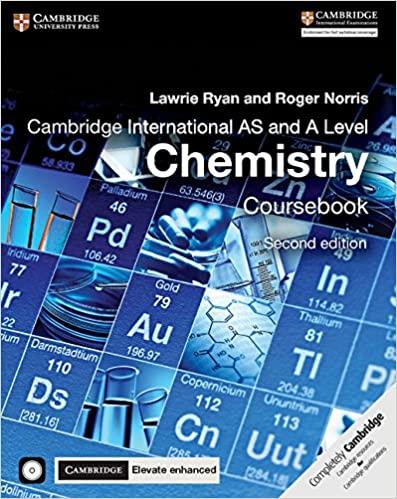Answered step by step
Verified Expert Solution
Question
1 Approved Answer
1. Classify each by the type of reaction as combination, decomposition, single displacement or double displacement 2Mg(s)+O2(g)2MgO(s)H2CO3(aq)H2O(l)+CO2(g)Sn(s)+Pb(NO3)2(aq)Pb(s)+Sn(NO3)2(aq)FeCl3(aq)+3NaOH(aq)3NaCl(aq)+Fe(OH)3(s)8H2(g)+S8(s)8H2S(g)CaCO3(s)CaO(s)+CO2(g) 2. Rank the metals A,B,C in an activity

Step by Step Solution
There are 3 Steps involved in it
Step: 1

Get Instant Access to Expert-Tailored Solutions
See step-by-step solutions with expert insights and AI powered tools for academic success
Step: 2

Step: 3

Ace Your Homework with AI
Get the answers you need in no time with our AI-driven, step-by-step assistance
Get Started


